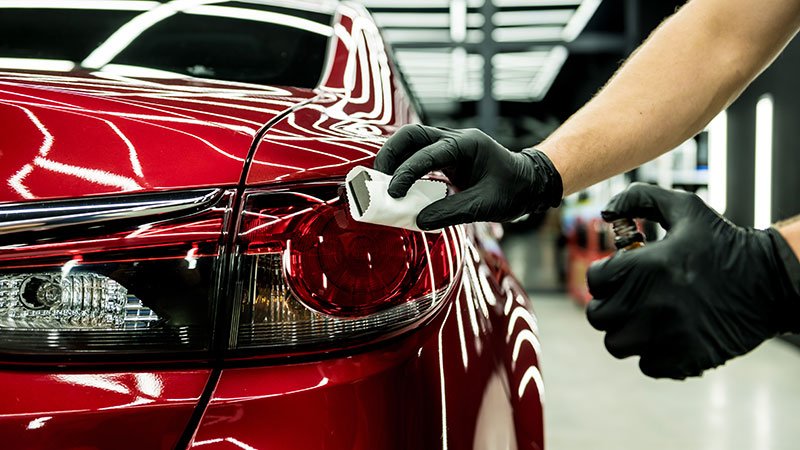Choose certified auto detailing for a precise interior and exterior cleaning.
Choose certified auto detailing for a precise interior and exterior cleaning.
Blog Article
A Comprehensive Guide to the Types of Ceramic Finish on the marketplace
Ceramic layers have emerged as a crucial option throughout different sectors because of their one-of-a-kind residential or commercial properties and applications. From silica-based solutions understood for their effectiveness to hybrid alternatives that merge numerous benefits, the selections offered can be frustrating. Comprehending the nuances of each kind, including their details advantages and suitable usage instances, is important for making educated decisions. As we explore the unique features and applications of these coverings, the ramifications for performance and durability come to be significantly obvious, elevating questions regarding which type may best suit your demands.
Recognizing Ceramic Coatings
Ceramic coatings are advanced protective solutions that have gained appeal in numerous markets, especially in automobile and aerospace applications. These finishes contain a fluid polymer that, when treated, develops a resilient, hydrophobic layer on the surface area of the substrate. This layer offers enhanced resistance to environmental impurities, UV radiation, and chemical direct exposure, therefore expanding the life and visual allure of the underlying product.
The essential component of ceramic coatings is silica, which contributes to their solidity and toughness. The application process generally includes surface area preparation, application of the finish, and healing, which can be accomplished through warmth or UV light. When cured, ceramic layers display outstanding bonding properties, permitting them to adhere highly to a range of surfaces, consisting of metals, plastics, and glass.
Along with their protective attributes, ceramic finishings also supply ease of upkeep. Their hydrophobic nature minimizes the adherence of dirt and grime, making cleansing easier and much less frequent. Overall, the fostering of ceramic coverings stands for a considerable advancement in surface area defense innovation, giving both practical and visual advantages across numerous industries.
Kinds of Ceramic Coatings
Various types of ceramic layers are offered, each created to meet particular efficiency needs and applications - ceramic coating sarasota. The most typical kinds consist of:
Silica-based Coatings: These coverings mostly contain silicon dioxide and are known for their longevity and chemical resistance. They are widely used in automobile and industrial applications.
Titanium Dioxide Coatings: Renowned for their photocatalytic buildings, titanium dioxide coatings are typically applied in settings where self-cleaning and antifungal homes are desirable, such as in building products and vehicle surfaces.
Zirconia Coatings: Identified by their high-temperature security and thermal resistance, zirconia layers are made use of in applications such as wind turbine engines and high-performance automobile components.
Alumina Coatings: Showing superb firmness and thermal stability, alumina coatings are regularly utilized in wear-resistant applications, including reducing tools and commercial equipment. - Auto Detailing
Crossbreed Coatings: Combining the residential or commercial properties of various products, hybrid layers use enhanced efficiency attributes, making them appropriate for unique and demanding applications.
Each sort of ceramic layer offers unique objectives, enabling customers to choose the most ideal service based upon More hints certain environmental conditions and performance demands.
Benefits of Ceramic Coatings
Ceramic finishings, in specific, offer various advantages that make them progressively preferred amongst makers and customers alike. These layers are resistant to scrapes, chemicals, and UV rays, making sure that the underlying surface stays protected over time.
In addition to durability, ceramic layers offer excellent hydrophobic residential or commercial properties, permitting very easy cleansing and upkeep. This water-repellent nature lessens the adherence of dust, crud, and various other contaminants, which can prolong the aesthetic appeal and functionality of the surface area. Furthermore, ceramic finishes can considerably boost thermal resistance, making them ideal for applications that sustain high temperatures.

Application Process
When using ceramic coverings, a precise approach is vital to accomplish optimum outcomes. The application procedure usually begins with complete surface area preparation. This includes washing, decontaminating, and polishing the surface to remove all pollutants, including dust, oil, and prior waxes or sealants. A tidy surface area makes sure correct bond of the layer.
As soon as the surface is prepped, the next step is to apply the ceramic finish. The coating must be applied in thin layers, as thicker applications can lead to irregular coatings.
After application, the finishing requires a details healing time, normally ranging from a couple of hours to a complete day, depending on the item. Throughout this time, it is vital to avoid direct exposure to dampness or impurities. A mild buffing might be necessary after healing to enhance the gloss and eliminate any high spots. Adhering to these actions diligently will take full advantage of the efficiency and durability of the ceramic covering, giving a resilient safety layer for the surface.
Upkeep and Longevity
To ensure the longevity and performance of a ceramic covering, routine maintenance is vital. Ceramic layers, known for their durability and protective top qualities, need certain care regimens to maximize their life expectancy find out here now and performance.
Along with regular cleaning, regular inspections are critical. Search for signs of wear or damages, such as hydrophobic residential or commercial properties lessening or surface area flaws. If required, a light polish might be related to revitalize the finishing without stripping it away.
In addition, the application of a booster spray can enhance the coating's hydrophobic impacts and recover its gloss. This is particularly beneficial for coatings that have remained in use for a prolonged duration. Eventually, by adhering to these maintenance practices, one can substantially extend the life of a ceramic coating, making certain that it remains to offer ideal security against ecological factors and keep the visual charm of the automobile.
Final thought

Report this page